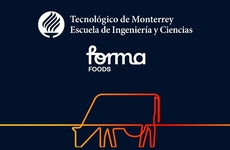
These Artificial Rodents Help Make Dissection a Safer and More Humane Process
Katherine Pendrill — June 19, 2015 — Tech
References: necropsynth & treehugger
A Maryland couple has begun using a 3D printer to make artificial rodents for lab dissection. While the 3D-printed rats may seem like a strange idea, the synthetic rodents offer a safer and more humane alternative to real rats.
According to the National Anti-Vivisection Society, as many as 12 million rats are dissected in the US every year. To help reduce the amount of live animals needed for this process, a Maryland couple has begun using a 3D printer to design accurate anatomical models for educational purposes. While their current model is only a prototype, the couple plans on making the schematics available for free in order to make scientific education more widely accessible.
The artificial rodents are not only cheaper and more humane alternative to real rats, they also reduce a student's exposure to the harmful chemicals used to preserve the rats. With so many advantageous qualities, these 3D-printed rats may soon become a classroom staple.
According to the National Anti-Vivisection Society, as many as 12 million rats are dissected in the US every year. To help reduce the amount of live animals needed for this process, a Maryland couple has begun using a 3D printer to design accurate anatomical models for educational purposes. While their current model is only a prototype, the couple plans on making the schematics available for free in order to make scientific education more widely accessible.
The artificial rodents are not only cheaper and more humane alternative to real rats, they also reduce a student's exposure to the harmful chemicals used to preserve the rats. With so many advantageous qualities, these 3D-printed rats may soon become a classroom staple.
Trend Themes
1. 3d-printed Models - 3D printing technology is being used to create accurate anatomical models for educational purposes, offering a safer alternative to traditional dissection.
2. Humane Alternatives - The development of synthetic rodents through 3D printing offers a more humane approach to scientific education, reducing the need for live animals.
3. Accessible Scientific Education - The availability of free schematics for 3D-printed rats enables wider access to scientific education and promotes learning opportunities for students.
Industry Implications
1. Education - The education sector can benefit from the use of 3D-printed models, providing safer and more inclusive learning experiences for students.
2. Healthcare - The healthcare industry can explore the use of 3D printing technology to develop anatomical models for medical training and surgical planning, improving patient care.
3. Animal Welfare - The advancements in 3D printing offer opportunities for the animal welfare industry to promote humane alternatives for lab dissections and reduce harm to animals.
3.6
Score
Popularity
Activity
Freshness























